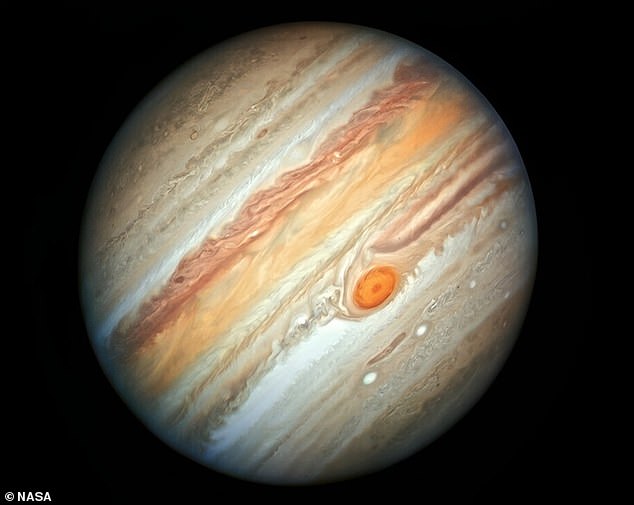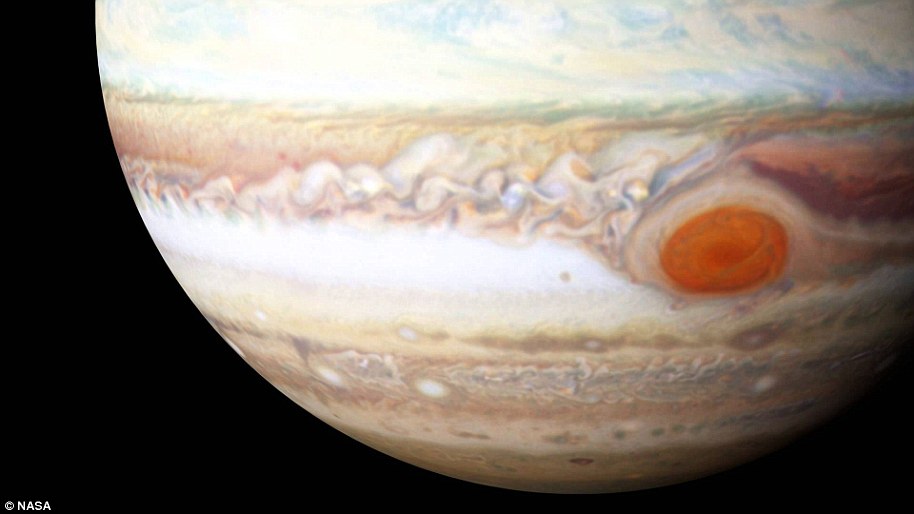It is a swirling mass of crimson clouds, more than 8,000 miles wide, large enough to engulf the Earth.
But the Great Red Spot on Jupiter’s surface is shrinking, and scientists may finally know why.
According to experts, the site has managed to maintain its large size for a long time by absorbing smaller storms, but these may be gradually decreasing.
However, the massive, spinning red storm is still shrouded in mystery.
Astronomers don’t know exactly when the spot formed, why it formed, or even why it is red.
Look at a photograph or artist’s illustration of Jupiter and you’ll likely see the Great Red Spot, a massive swirling storm in the planet’s atmosphere.
Located in Jupiter’s southern hemisphere, Jupiter’s Great Red Spot is a rotating, orange-red oval of high pressure more than 10,000 miles (16,000 kilometers) wide.
It constantly blows at over 200 miles per hour counterclockwise, making it an “anticyclone.”
No one knows when it started, but humans have observed it since 1831, and possibly even earlier.
But it has been declining for most of the century, particularly in the last 50 years.
Since 2012, the spot has become more circular and has been shrinking at a faster rate of about 900 kilometers per year.
At the end of the 19th century it was estimated to be about 38,000 kilometres wide, but it is now about 14,000 kilometres wide.
“Many people have observed the Great Red Spot over the past 200 years and were as fascinated by it as I was,” said lead author Caleb Keaveney, a doctoral student in space weather at Yale University.
“Many of these people were not professional astronomers: they were simply passionate and curious.”
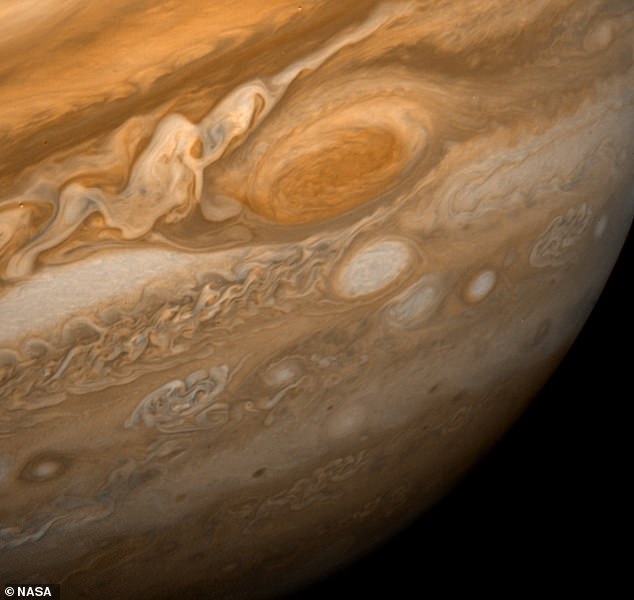
However, the spot is still shrouded in mystery. Astronomers don’t know exactly when it formed, why it formed or even why it is red.
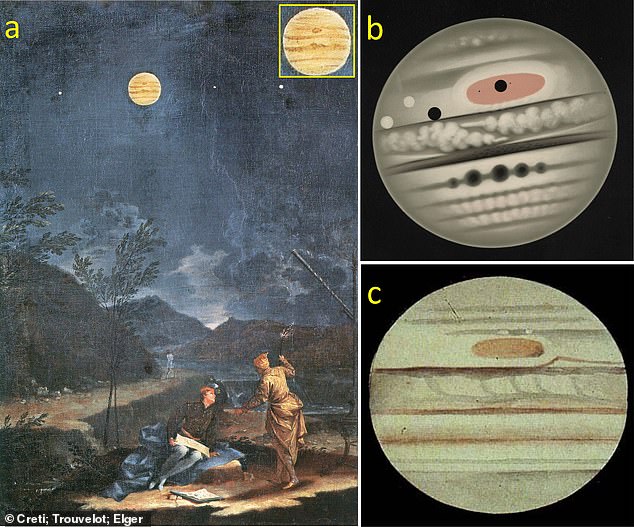
Humans have observed the spot since 1831, and possibly even earlier. (a) Donato Creti’s 1711 painting of Jupiter has a reddish spot (inset). (b) Drawing by French artist and painter E.L. Trouvelot dated 2 November 1880. (c) Drawing by T.G. Elger dated 28 November 1881. Note that in (b) and (c) the spot is oval-shaped.
Using a computer model, Keaveney and his colleagues simulated interactions between the Great Red Spot and smaller transient storms on Jupiter.
By “feeding” the Great Red Spot a “diet of smaller storms,” they were able to control how big or small the spot would become.
The model actually suggests that “eating” smaller storms makes the Great Red Spot bigger.
So the fact that the spot has been getting smaller suggests that there are fewer of these smaller storms around.
While this is not something the new study has discovered or even set out to establish, the team wants to investigate this question next.
“Whether the GRS is actually fuelled by fewer storms than before is a question for future study,” Keaveney told MailOnline.
Figuring out what is causing the spot to shrink could give scientists a prediction of its “ultimate demise.”
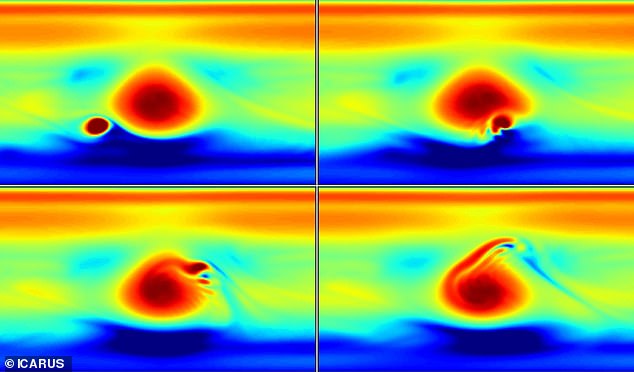
This image shows the Great Red Spot “consuming” a smaller storm during one of the team’s simulated interactions.
Jupiter is known as the largest planet in our solar system: it is approximately 142,800 kilometers (88,695 miles) in diameter.
It’s a gas planet, so while a spacecraft would have nowhere to land on Jupiter, it also wouldn’t be able to fly through it unscathed.
Jupiter’s distinctive streaks and swirls are actually cold, windy clouds of ammonia and water, floating in an atmosphere of hydrogen and helium.
According to the team, additional modeling will allow researchers to refine the new findings and hopefully shed light on the early formation of the Great Red Spot.
“Jupiter’s Great Red Spot is one of the oldest and largest discrete weather features in the solar system,” they say in their paper, published in Icarus.
‘These model simulations and observational efforts are necessary to ultimately reveal the dynamics underlying the evolution of the largest and oldest vortex in our solar system.’

